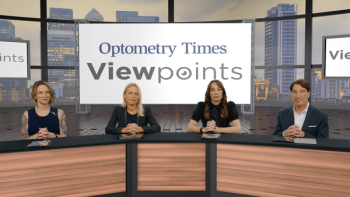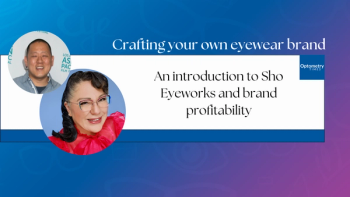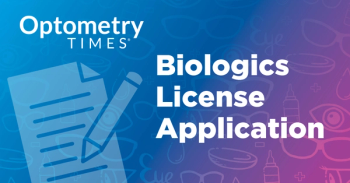
Exploratory analysis discovers key predictive factors of improved BCVA in treatment of LHON disease with lenadogene nolparvovec
Better best-corrected visual acuity values and baseline thicker ganglion cell layer and retinal nerve fiber layer at ocular coherence tomography measurements were found to be the key predictive factors.
A recent exploratory analysis has identified key predictive factors of improved best-corrected visual acuity (BCVA). The study found these factors a year and a half after patients with Leber hereditary optic neuropathy (LHON) (caused by mt-ND4) received GenSight Biologics’ investigational gene therapy lenadogene nolparvovec (Lumevoq), which was administered at least 6 months after disease onset.1,2
Better BCVA values and baseline thicker ganglion cell layer (GCL) and retinal nerve fiber layer (RNFL) at optical coherence tomography (OCT) measurements were found to be the key factors. The analysis was published in Investigational Ophthalmology and Visual Science.1,2
“By linking structure and function, [this exploratory study] improves our understanding of the factors influencing vision recovery after lenadogene nolparvovec administration in patients with MT-ND4 LHON, showing that better baseline BCVA values and thicker baseline OCT retinal layers in the dynamic phase of the disease, particularly the outer segments of macular GCL, are the key predictive factors associated with better BCVA 1.5 years after treatment in patients who received gene therapy at least 6 months after disease onset,” stated study authors, led by Robert C. Sergott, MD, from the Departments of Ophthalmology and Neurology at Wills Eye Hospital and Thomas Jefferson University, as well as the head of the Central Reading Center at William H. Annesley, Jr, EyeBrain Center.2 “This relationship between preservation of retinal structures and response to treatment strongly supports an effect of lenadogene nolparvovec on [retinal ganglion cell, or] RGC survival and function. These findings should facilitate optimization of patient selection for future clinical trials.”
Researchers conducted univariate analyses on 113 eyes of patients in GenSight’s 3 phase 3 studies – RESCUE, REVERSE, and REFLECT – with BCVA and 1.5 years post treatment as the dependent variable.1,2 Age, gender, timing of treatment, baseline BCVA value, and baseline OCT parameters were noted as covariates. BCVA was assessed by using the Early Treatment Diabetic Retinopathy Study (ETDRS) chart at 1 or 4 meters.2 Findings from the analysis indicated that “patients treated during the dynamic phase of the disease achieve better visual outcomes than patients treated during the subacute phase of the disease,” according to a GenSight news release.1
Given these results, study authors hypothesize that RNFL swelling during the subacute phase may hamper the diffusion of the viral vector to RGCs. However, during the dynamic phase, study authors state that stabilized retinal layers are instead preserved, allowing for successful transfection efficiency of RGCs – and the effects of gene therapy as a result.2
“Our results support the existence of a relationship between better GCL and RNFL preservation at baseline and final visual outcome in MT-ND4 patients treated with gene therapy at least 6 months after disease onset, unequivocally linking structure with function,” the authors stated.2
“The study is the first to use spectral domain-optical coherence tomography (SD-OCT) and other clinical outcomes to identify predictive factors of BCVA changes 1.5 years after treatment,” said Sergott in the release.1 “The structural and functional evidence concurs that direct injection of lenadogene nolparvovec may be more effective than the contralateral therapeutic effect, thus supporting a recommendation to treat LHON patients bilaterally when possible.”
Study authors noted that limitations of the study include its exploratory nature, in addition to the absence of a pure sham/placebo control group. The inclusion of this group could provide insights on predicative factors of outcome of the spontaneous evolution of MT-ND4 LHON disease. Findings were also limited to the administering of gene therapy during the subacute and dynamic phases of the disease.2
References:
GenSight Biologics announces publication of predictors of final visual outcome in patients treated with Lumevoq gene therapy. News release. GenSight Biologics. July 17, 2025. Accessed July 24, 2025.
https://www.businesswire.com/news/home/20250717701196/en/GenSight-Biologics-Announces-Publication-on-Predictors-of-Final-Visual-Outcome-in-Patients-Treated-with-LUMEVOQ-Gene-Therapy Sergott RC, Carelli V, Newman NJ, et al. Predictors of final visual outcome in patients with Leber hereditary optic neuropathy treated with lenadogene nolparvovec gene therapy. Invest Ophthal & Vis Sci. 2025;66(42).
https://doi.org/10.1167/iovs.66.9.42
Newsletter
Want more insights like this? Subscribe to Optometry Times and get clinical pearls and practice tips delivered straight to your inbox.










































